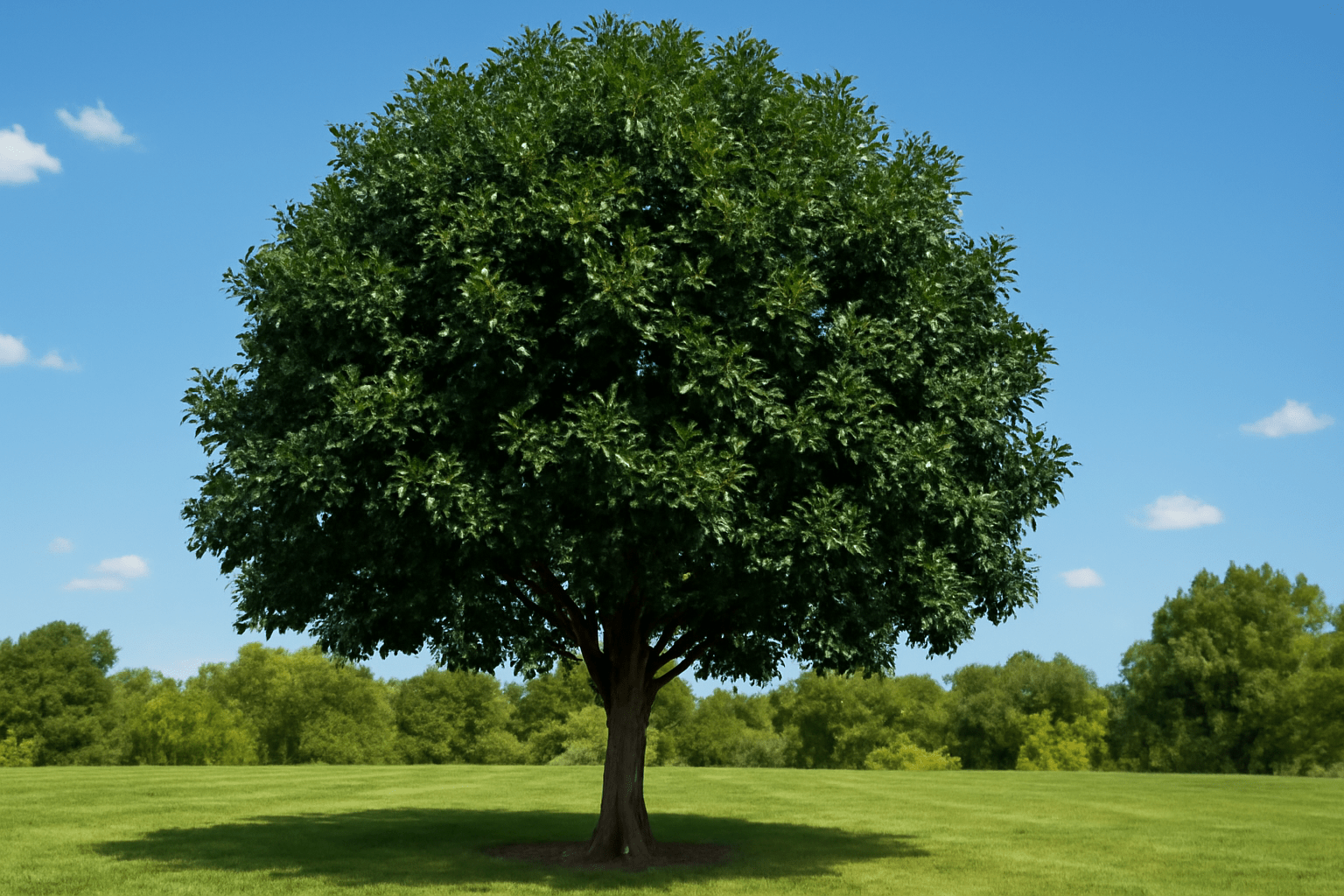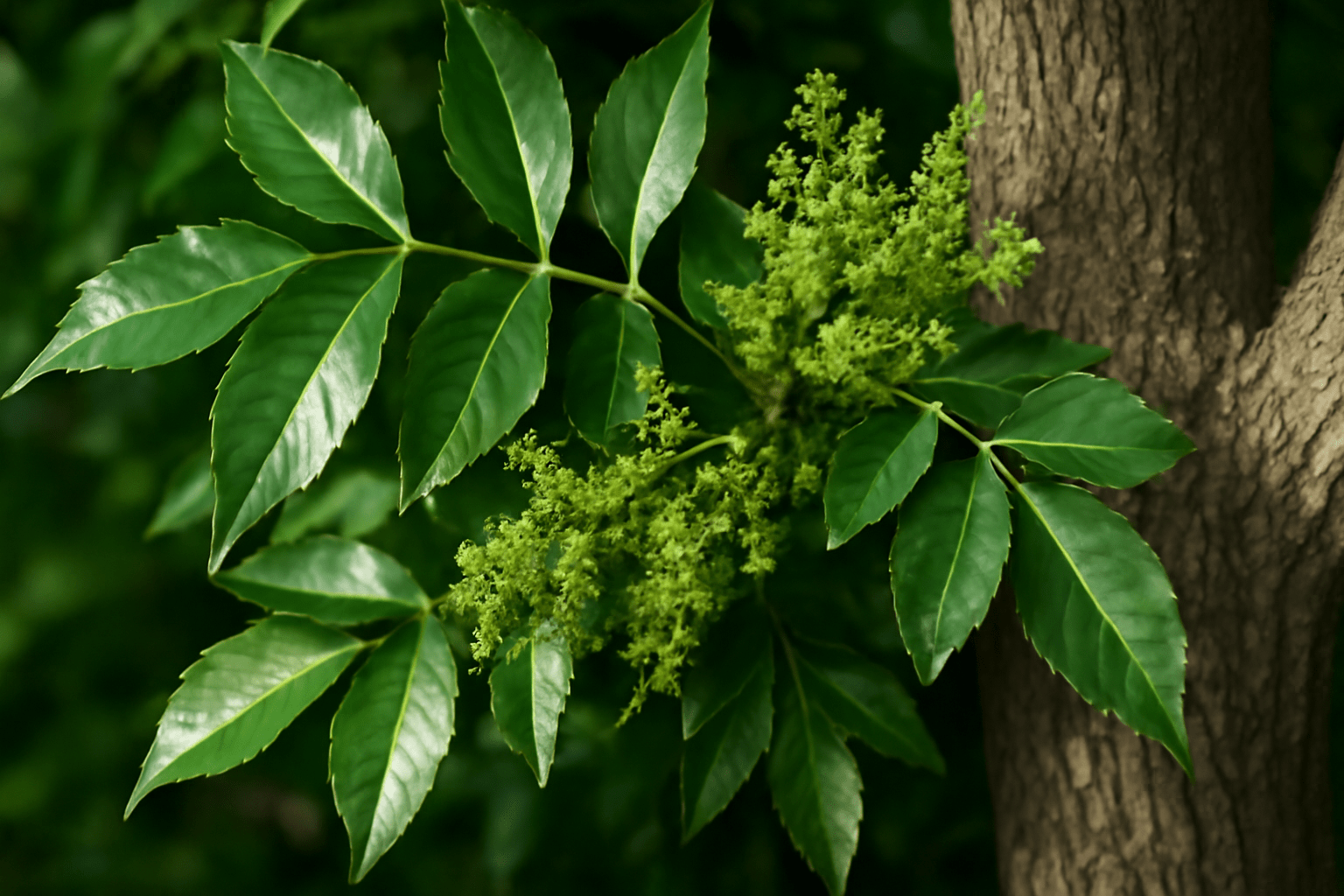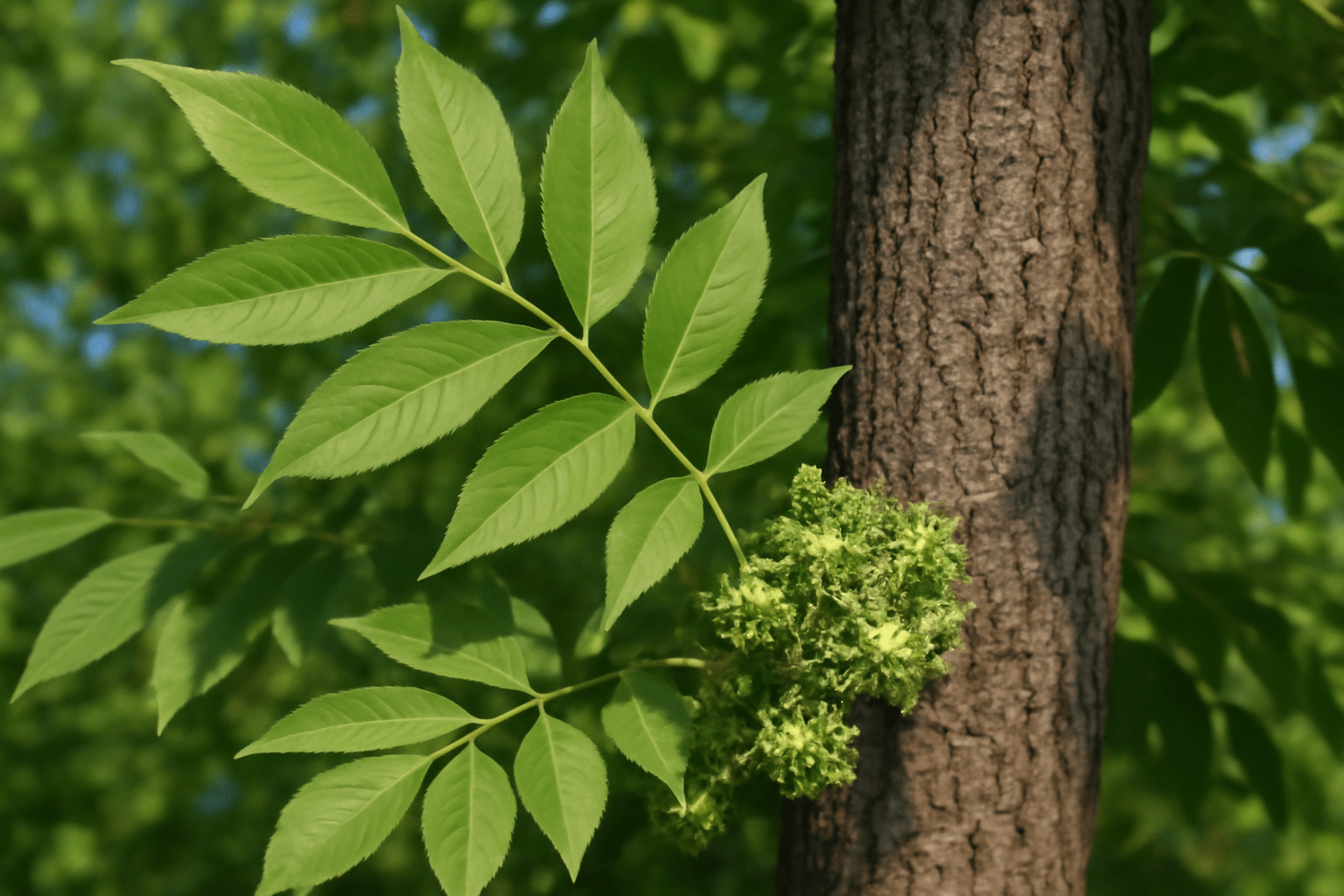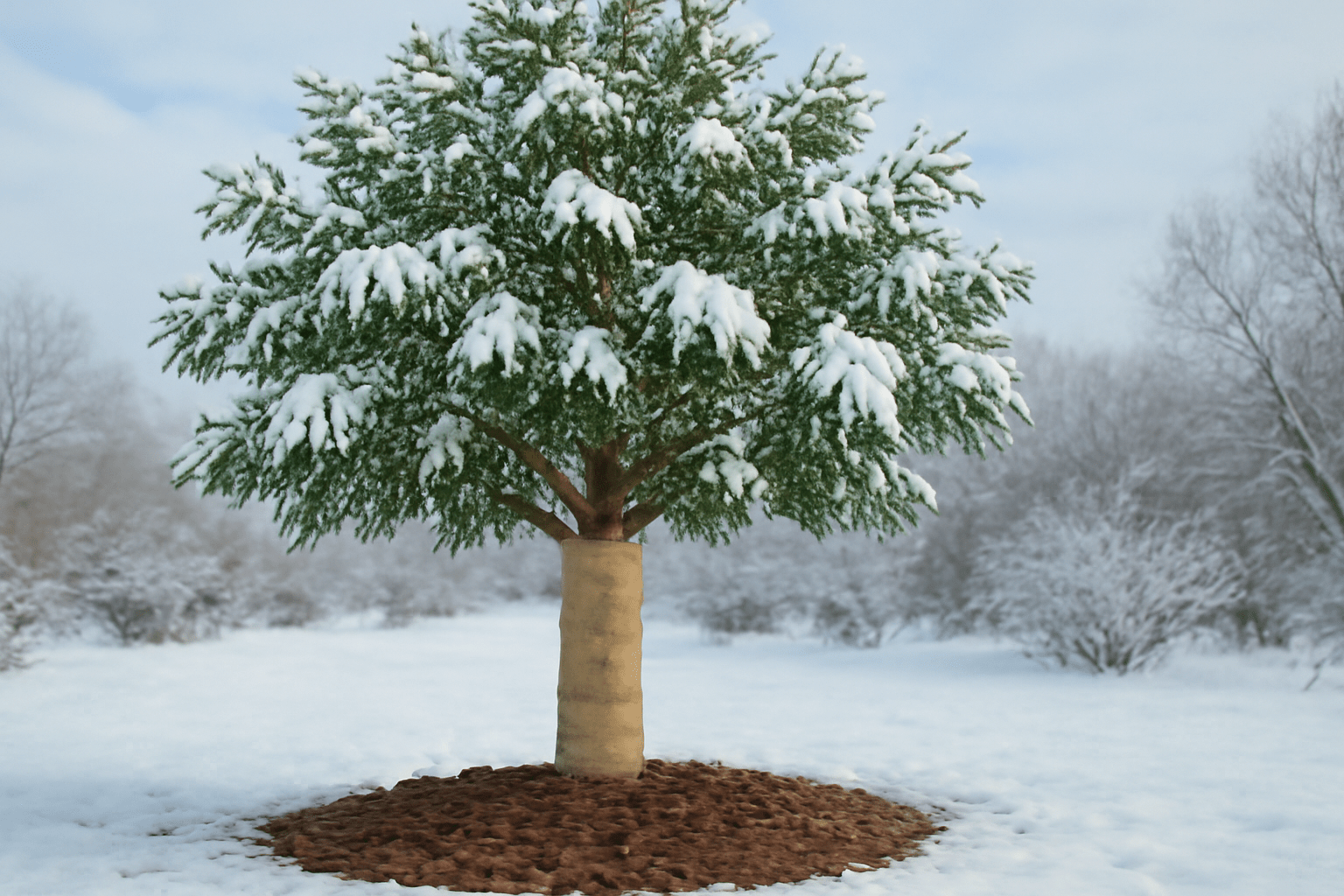
How to Identify and Care for the Fan Tex Ash Tree: Essential Tips for Healthy Growth
If you’re looking to add a beautiful, low-maintenance tree to your landscape, the Fan Tex Ash Tree might be exactly what you need! Known for its striking appearance and impressive resilience, this tree can thrive in tough conditions, from hot summers to droughts. But how do you ensure your Fan Tex Ash Tree grows strong and healthy? 🤔
Many gardeners struggle with identifying the right care techniques or even understanding the tree’s needs. Without the proper knowledge, you may run into problems like yellowing leaves, pest issues, or stunted growth. But don’t worry — in this guide, you’ll discover everything you need to know to identify and nurture your Fan Tex Ash Tree for long-lasting health and beauty.

From understanding its unique characteristics to mastering the best care practices, this article will equip you with practical, easy-to-follow tips that solve common problems and help your tree flourish 🌿. Keep reading to become a confident, informed tree caretaker!
Table of Contents
Toggle🪴 What is the Fan Tex Ash Tree? 🌳
The Fan Tex Ash Tree (scientific name: Fraxinus texensis) is a versatile and hardy tree that’s perfect for those looking to add beauty and resilience to their landscape. Native to the Southwestern United States, particularly Texas, this tree is known for its striking appearance and low maintenance requirements, making it an excellent choice for homeowners and gardeners alike.

Here’s what you should know about the Fan Tex Ash Tree:
1. Size and Shape 🌳
This medium-sized, deciduous tree typically grows between 25 to 35 feet tall and spreads out just as wide. It has a rounded, graceful canopy that adds an elegant touch to any yard or garden.
2. Leaves 🍃
The tree’s leaves are one of its standout features! They’re pinnate (feather-like) with 5-9 leaflets per leaf. During the growing season, the leaves are dark green and glossy, creating a vibrant backdrop to the landscape. Come fall, the Fan Tex Ash Tree shows off beautiful golden-yellow foliage that adds seasonal color and interest 🍂.
3. Flowers 🌸
Though not as flashy as its leaves, the small, greenish flowers of the Fan Tex Ash Tree bloom in early spring. They’re not particularly showy, but they attract pollinators like bees, which is a bonus for the ecosystem 🐝.
4. Bark 🌳
When young, the tree’s bark is smooth and gray, but over time, it becomes more textured and furrowed, giving it a rugged look as it matures.
5. Drought-Tolerance 🌞💧
One of the reasons the Fan Tex Ash Tree is so popular is its ability to tolerate harsh conditions, especially drought. Once established, it’s highly resistant to dry spells, which makes it a perfect choice for regions with hot summers and low water availability.
The Fan Tex Ash Tree is a low-maintenance tree that thrives in full sun, making it ideal for gardens, parks, or even street plantings. Whether you’re an experienced gardener or a beginner, this tree’s resilience and beauty will make it a wonderful addition to your outdoor space. 🌳😊
🌿 How to Identify the Fan Tex Ash Tree 🌳
Identifying the Fan Tex Ash Tree is easy once you know what to look for! Its unique features make it stand out in any landscape. Here’s a simple guide to help you recognize this beautiful tree:

1. Leaves 🍃
- Shape: The Fan Tex Ash Tree has pinnate (feather-like) leaves, meaning the leaflets are arranged on either side of a central stem.
- Number of Leaflets: Each leaf typically has 5 to 9 leaflets.
- Color: The leaves are dark green during spring and summer, giving the tree a lush, vibrant look. In the fall, the leaves turn a stunning golden-yellow color 🍂.
2. Bark 🌰
When young, the bark of the Fan Tex Ash Tree is smooth and gray. As the tree matures, it develops a furrowed and rough texture, giving it an aged, weathered appearance. The bark is generally light gray to brown, adding a rugged charm to the tree.
3. Flowers 🌸
- Color and Size: The Fan Tex Ash Tree produces small, greenish flowers that bloom in early spring. These flowers aren’t large or showy, but they are an important characteristic of the tree’s lifecycle.
- Flowering Time: The tree’s flowers typically appear before the leaves emerge in early spring, making it easy to spot when the tree is in bloom.
4. Growth Habit and Shape 🌱
- Size: The Fan Tex Ash Tree grows to be a medium-sized tree—typically 25 to 35 feet tall and just as wide.
- Crown Shape: It has a rounded canopy with spreading branches that form a dense crown. This makes it a great shade tree for your garden or yard.
5. Fruit (Seeds) 🌰
The tree produces small, winged seeds that hang in clusters. These seeds are light brown and can easily be carried by the wind, which is a common feature of ash trees.
By keeping an eye out for these key features—its pinnate leaves, smooth-to-textured bark, greenish flowers, and winged seeds—you’ll have no trouble identifying the Fan Tex Ash Tree in your garden or local landscape. It’s a great tree to spot, especially during fall when the golden-yellow leaves catch your eye! 🌟
🌞 Ideal Growing Conditions for the Fan Tex Ash Tree 🌳
The Fan Tex Ash Tree is a tough and adaptable tree, making it perfect for a variety of growing conditions. However, to ensure your tree thrives and grows healthy, it’s important to plant it in the right environment. Here’s what you need to know about the ideal conditions for your Fan Tex Ash Tree to flourish:

1. Sunlight Requirements ☀️
- Full Sun: The Fan Tex Ash Tree loves the sun! For optimal growth, plant it in a location that receives at least 6 hours of direct sunlight per day. This will ensure it gets the energy it needs to grow strong and vibrant.
- Partial Shade: While it thrives in full sun, it can tolerate partial shade, especially in hotter climates. However, too much shade can limit its growth and prevent the tree from reaching its full potential.
2. Soil Type 🌱
- Well-Drained Soil: The Fan Tex Ash Tree prefers well-drained soil. It can adapt to a range of soil types, including loamy, sandy, or clay soils. However, poor drainage can lead to root rot, so it’s essential that water doesn’t pool around the roots.
- Soil pH: This tree is quite adaptable to different pH levels, but it thrives in slightly acidic to neutral soils (pH 6.0 to 7.5).
3. Watering Needs 💧
- Deep Watering: While Fan Tex Ash Trees are drought-tolerant once established, they need regular watering when young to develop strong roots. Water deeply, ensuring that the water reaches the roots.
- Infrequent Watering for Mature Trees: Once the tree is well-established, it can withstand dry conditions, but occasional deep watering during prolonged dry spells is recommended for optimal growth.
4. Temperature Tolerance 🌡️
- Heat Tolerant: The Fan Tex Ash Tree is well-suited for hot climates, making it a great choice for regions with long, hot summers. It thrives in temperatures from 70°F to 100°F (21°C to 38°C), which makes it ideal for places like Texas and the Southwestern U.S.
- Cold Hardy: While it’s a hardy tree, it prefers milder winters. It’s best suited for USDA hardiness zones 7 to 9. It can tolerate light frost but may struggle in harsher, colder winters.
5. Space and Location 🏡
- Space to Grow: The Fan Tex Ash Tree has a moderate spread, so give it enough space to grow. Ideally, plant it at least 15 feet away from buildings or other structures to allow its branches to spread freely.
- Avoid High-Traffic Areas: Make sure the planting site is not in a location with heavy foot traffic. Roots need room to expand, and compacted soil can hinder growth.
By ensuring your Fan Tex Ash Tree receives plenty of sunlight, well-drained soil, and the right amount of water, you’ll set it up for a long and healthy life. Whether you live in a dry, sunny region or a slightly cooler area, this tree can adapt and thrive with just a little attention to its growing conditions. 🌳😊
🌿 Regular Care and Maintenance for the Fan Tex Ash Tree 🌳
Taking care of your Fan Tex Ash Tree doesn’t have to be complicated. With a few simple maintenance tasks, you can ensure your tree stays healthy, vibrant, and thriving throughout the year. Here are the essential care tips you need to follow:
1. Watering 💧
- Young Trees: For the first few years, your Fan Tex Ash Tree will need regular watering to establish strong roots. Water it deeply every 2-3 weeks during dry periods. Make sure the water reaches the root zone, not just the surface.
- Mature Trees: Once established, the tree is drought-tolerant and can survive on natural rainfall. However, during hot, dry spells, it’s helpful to give it a deep watering once a month to keep it healthy.
Pro Tip: Watering in the morning or evening reduces evaporation, allowing your tree to absorb more moisture.
2. Fertilization 🌱
- When to Fertilize: Feed your Fan Tex Ash Tree once a year, in early spring, to support healthy growth. Use a balanced, slow-release fertilizer with equal amounts of nitrogen, phosphorus, and potassium (e.g., 10-10-10).
- Avoid Over-Fertilizing: Excessive fertilizer, especially high-nitrogen varieties, can lead to weak, spindly growth and increased susceptibility to pests and diseases. Stick to the recommended amounts.

3. Pruning ✂️
- Best Time to Prune: The best time to prune your Fan Tex Ash Tree is during late winter or early spring, before new growth starts. This allows you to remove any dead or damaged wood without disturbing the tree’s active growing period.
What to Trim:
- Remove Dead or Diseased Branches: These can be a breeding ground for pests and disease, so it’s important to cut them back.
- Thin Out the Canopy: If your tree’s canopy is too dense, prune some inner branches to improve airflow and sunlight penetration. This will help prevent mold and fungal diseases.
- Shape the Tree: Remove any branches that cross each other or grow in awkward directions to encourage a strong, balanced structure.
4. Mulching 🌾
- Why Mulch?: Mulching helps retain moisture, regulate soil temperature, and prevent weeds. It’s especially important during the first few years as it keeps the roots cool and hydrated.
- How Much Mulch?: Apply a 2-3 inch layer of mulch around the base of the tree, making sure not to pile it against the trunk. Keep the mulch about 3 inches away from the trunk to avoid rot.
5. Pest and Disease Management 🐞
- Common Pests: Keep an eye out for aphids, scale insects, and borers, which can damage your Fan Tex Ash Tree. Regularly inspect the leaves and branches for signs of these pests.
- Solution: Use insecticidal soap or horticultural oil for light infestations. Encourage natural predators like ladybugs to help keep pests under control.
Diseases: Ash dieback and powdery mildew are common issues. If you notice wilting or discolored leaves, remove affected branches and dispose of them properly.
Solution: Use a fungicide to treat powdery mildew, and avoid overhead watering to reduce moisture on leaves, which can encourage fungal growth.
6. Seasonal Care 🌸🍂
- Spring: In spring, focus on pruning, fertilizing, and ensuring your tree is getting enough water as the weather warms up.
- Summer: During hot months, make sure your Fan Tex Ash Tree is well-watered and protected from stress by keeping the soil moist and mulching around the base.
- Fall: Fall is a good time to rake fallen leaves, check for any pests, and prepare your tree for the colder months.
- Winter: In winter, add extra mulch around the base to insulate the roots and protect them from freezing temperatures. If needed, prune dead branches that might be damaged by snow or ice.
7. Monitoring for Stress 🧐
Keep an eye on your Fan Tex Ash Tree for signs of stress such as yellowing leaves, wilting, or drooping. This could indicate issues like poor watering, nutrient deficiencies, or pest infestations.
By following these regular care and maintenance tips, you’ll keep your Fan Tex Ash Tree healthy and thriving year-round. The more you care for it, the more you’ll enjoy its beauty and benefits in your garden or landscape! 🌳😊
❄️ Winterizing the Fan Tex Ash Tree 🌳
Winter can be a challenging time for many trees, but with a little preparation, your Fan Tex Ash Tree can easily withstand the colder months and come back strong in the spring. Winterizing your tree ensures it stays healthy through frost, freezing temperatures, and the occasional snowstorm. Here’s how you can prepare your tree for winter:

1. Mulch the Base 🌾
- Why Mulch?: Mulching around the base of your Fan Tex Ash Tree is essential for protecting the roots from freezing temperatures. It acts as an insulator, helping to regulate soil temperature and retain moisture.
- How to Apply: Apply a 2-3 inch layer of mulch around the base of the tree, but avoid piling it directly against the trunk to prevent rot. Materials like wood chips, straw, or shredded leaves work well.
2. Water Before the First Frost 💧
- Importance of Watering: Before the temperatures drop, make sure your Fan Tex Ash Tree is well-watered. Trees can become stressed in winter if they don’t have enough moisture in the soil.
- Deep Watering: Water the tree deeply to ensure the roots are hydrated, especially if you’re experiencing a dry fall. Moisture will help the tree through the colder months when water is less available.
3. Prune Dead or Damaged Branches ✂️
- Remove Weak Branches: In late fall or early winter, remove any dead, broken, or damaged branches from your Fan Tex Ash Tree. These branches are more susceptible to breaking under the weight of snow or ice.
- Shape the Tree: Prune branches that cross or rub against each other, as these can cause friction and weaken the tree during the winter winds.
4. Protect the Trunk 🛡️
- Trunk Protection: If you live in an area where the temperature fluctuates frequently, the bark of your Fan Tex Ash Tree can suffer from sunscald or frost cracks. Protect the trunk by wrapping it with tree wraps or burlap. This is especially important for younger trees with thinner bark.
- How to Wrap: Wrap the tree in a spiral pattern from the base to the top, leaving the top open for airflow. Avoid wrapping too tightly, as this can restrict the tree’s natural expansion.
5. Check for Pests 🐛
- Pest Prevention: Winter is a time when pests like scale insects and borers can overwinter in the bark of your tree. Inspect the tree closely for any signs of pest activity before the cold sets in.
- Treatment: If you notice any pests, treat the tree with horticultural oil or insecticidal soap to help control the infestation.
6. Protect from Heavy Snow and Ice ❄️
- Snow and Ice Damage: Heavy snow and ice can break branches and damage the tree. After a snowfall or ice storm, gently brush off snow from branches, especially the smaller ones that might break under the weight. Avoid shaking the tree forcefully, as this can cause damage.
- Avoid Salt: Be cautious with de-icing salts if you live in an area that uses them on roads or driveways. Salt can harm your tree if it comes into contact with the roots or bark, so try to prevent it from being spread around the tree.
7. Monitor Through Winter 👀
- Winter Checks: Periodically check on your Fan Tex Ash Tree throughout the winter months. Look for signs of damage from snow, ice, or pests. If you notice any issues, take action quickly to minimize further harm.
By taking these simple steps to winterize your Fan Tex Ash Tree, you’re setting it up for a strong and healthy spring. Proper preparation during the colder months will ensure the tree can handle the chill and be ready to thrive when the warmer weather returns. 🌳❄️
🌱 How to Propagate the Fan Tex Ash Tree 🌳
If you love your Fan Tex Ash Tree and want to grow more, propagation is a great way to expand your garden or landscape. While Fan Tex Ash Trees can be propagated through both seeds and cuttings, each method requires a bit of patience and care. Here’s how to successfully propagate your Fan Tex Ash Tree:

1. Propagating from Seeds 🌰
- Collecting Seeds: The Fan Tex Ash Tree produces winged seeds in the fall. These seeds are lightweight and can be carried by the wind. To collect them, wait until they have fallen off the tree and gather them from the ground.
- Cold Stratification: Ash tree seeds need a period of cold stratification (a cold treatment) before they can germinate. To prepare the seeds:
- Place the collected seeds in a plastic bag with some moist sand or peat moss.
- Store the bag in the refrigerator for about 30-60 days (this mimics the natural winter process).
- Planting the Seeds: After the stratification period, plant the seeds in a well-draining seed starting mix.
- Sow the seeds about 1/4 inch deep.
- Keep the soil moist and place the pot in a warm location, ideally around 70°F (21°C).
- Germination: Seeds will typically germinate within 2-3 weeks. Once the seedlings have grown large enough to handle, you can transplant them into larger pots or directly into the ground.
2. Propagating from Cuttings ✂️
- Best Time to Take Cuttings: The best time to take cuttings is during late winter or early spring when the tree is still dormant. At this time, the tree’s sap is not flowing actively, making it easier for the cutting to root.
- Choosing the Right Cutting: Select a healthy, young hardwood branch (about 4-6 inches long) from a healthy Fan Tex Ash Tree. Make sure the cutting has several buds on it.
Prepare the Cutting:
- Remove any leaves or side branches from the cutting, leaving just the top few buds.
- Make a clean cut just below a bud using a sharp knife or pruning shears.
- Dip the cut end of the branch into rooting hormone to promote root growth.
Rooting the Cutting:
- Place the cutting in a pot filled with well-draining potting mix. You can use a mix of perlite and peat moss to ensure good drainage.
- Keep the cutting in a humid environment by covering it with a plastic bag or placing it in a propagator.
- Water gently and ensure the soil remains moist, but not soggy.
- Place the cutting in a warm, bright spot but out of direct sunlight.
Root Development:
- Within about 4-8 weeks, the cutting should start developing roots. You can check for root growth by gently tugging on the cutting. If it resists, the roots have formed.
Transplanting:
- Once the cutting has developed a strong root system, you can transplant it into a larger pot or directly into the ground.
3. Additional Tips for Successful Propagation 🌿
- Patience is Key: Both seed and cutting propagation methods take time, so be patient. It can take several months for the seeds or cuttings to establish themselves.
- Environmental Conditions: For the best results, ensure that the seeds or cuttings are kept in a warm, well-lit, and humid environment until they root. Use a humidity dome or plastic bag to maintain moisture, and make sure the area doesn’t get too hot or cold.
With these simple steps, you can successfully propagate your Fan Tex Ash Tree and grow new trees to add to your landscape or share with others. Whether you choose to start from seeds or cuttings, the process can be incredibly rewarding and give you more of these beautiful, low-maintenance trees to enjoy! 🌳😊
Final Thoughts 🌳💚
The Fan Tex Ash Tree is an excellent choice for anyone looking to add a resilient, beautiful tree to their landscape. With its striking foliage, low maintenance needs, and ability to withstand tough conditions, it’s no wonder this tree is a favorite for gardeners and homeowners alike.
By understanding how to identify, plant, care for, and propagate your Fan Tex Ash Tree, you can ensure it thrives for many years to come. Whether you’re troubleshooting common problems, preparing for winter, or simply keeping up with regular care, each step helps create a healthier tree that will reward you with vibrant leaves, shade, and natural beauty.

🌱 Key to Success 🌱
Remember, proper planting, regular watering, and seasonal maintenance are the keys to a thriving Fan Tex Ash Tree. By taking the time to give your tree the care it needs, you’ll enjoy its benefits for years—and possibly even propagate new trees to spread the joy! 🌳💚
So, go ahead, start planting, caring for, or propagating your own Fan Tex Ash Tree with confidence. With the tips in this guide, you’re ready to make your tree a lasting and beautiful part of your outdoor space! 🌱😊
Frequently Asked Questions (FAQs)
What is the best location to plant a Fan Tex Ash Tree?
The Fan Tex Ash Tree thrives in full sun and should be planted in a location that receives at least 6 hours of direct sunlight per day. It also prefers well-drained soil and should be spaced at least 15 feet away from structures or other trees to allow for its spread.
How often should I water my Fan Tex Ash Tree?
Water your Fan Tex Ash Tree deeply once a week during the growing season, especially in hot, dry weather. Once the tree is well-established, it becomes drought-tolerant and requires less frequent watering, but make sure it’s watered deeply during extended dry spells.
How can I identify a Fan Tex Ash Tree?
Look for pinnate leaves with 5-9 leaflets, dark green in spring and golden-yellow in fall. The tree has a rounded canopy with a smooth grayish bark when young, and it produces small, greenish flowers in early spring.
Why are the leaves on my Fan Tex Ash Tree turning yellow?
Yellowing leaves may indicate overwatering, nutrient deficiencies, or pests. Check for root rot due to poor drainage, apply a balanced fertilizer, and inspect the tree for pests like aphids or scale insects.
When is the best time to prune my Fan Tex Ash Tree?
The best time to prune your Fan Tex Ash Tree is in late winter or early spring, before new growth begins. This helps maintain the tree’s shape, remove dead or diseased branches, and ensure healthy growth for the upcoming season.
How do I protect my Fan Tex Ash Tree from cold weather?
To winterize your Fan Tex Ash Tree, apply a 2-3 inch layer of mulch around the base to insulate the roots. Water the tree before the first frost, remove any damaged branches, and protect the trunk with tree wraps if needed.
Can I propagate my Fan Tex Ash Tree from seeds?
Yes, you can propagate the Fan Tex Ash Tree from seeds. After collecting the winged seeds, you’ll need to cold-stratify them in the refrigerator for about 30-60 days before planting them in a well-draining seed mix.
What are the common pests that affect the Fan Tex Ash Tree?
The Fan Tex Ash Tree can be affected by aphids, scale insects, and borers. Regularly inspect your tree for these pests, and use insecticidal soap or horticultural oil to control infestations.
